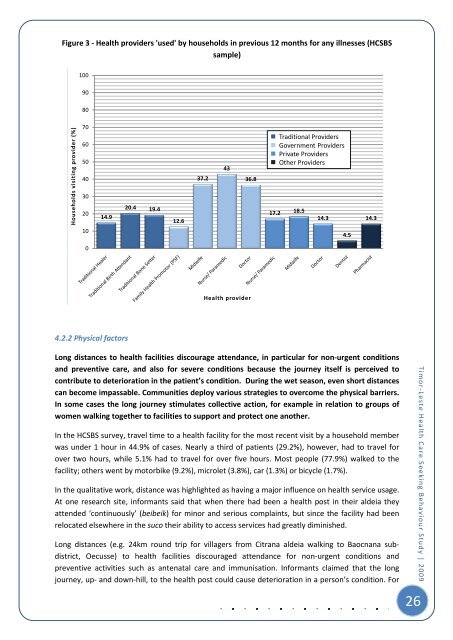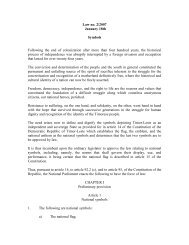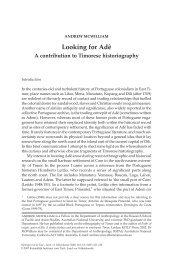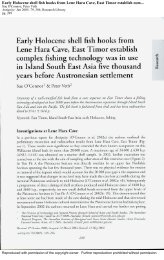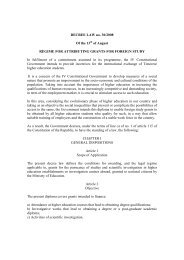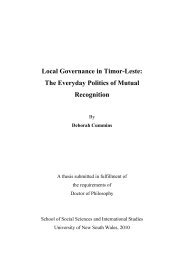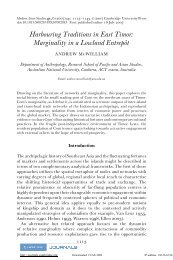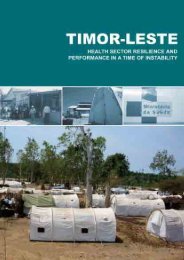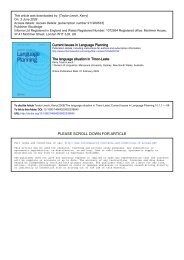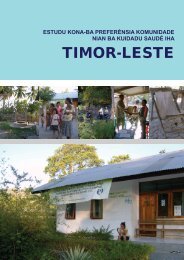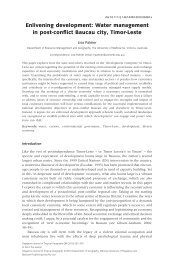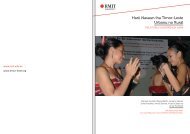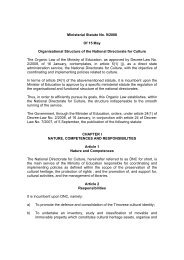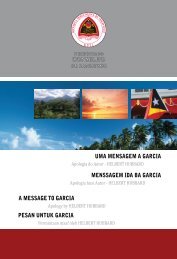Timor-Leste Health Care Seeking Behaviour Study - Secretaria de ...
Timor-Leste Health Care Seeking Behaviour Study - Secretaria de ...
Timor-Leste Health Care Seeking Behaviour Study - Secretaria de ...
- No tags were found...
Create successful ePaper yourself
Turn your PDF publications into a flip-book with our unique Google optimized e-Paper software.
Figure 3 - <strong>Health</strong> provi<strong>de</strong>rs 'used' by households in previous 12 months for any illnesses (HCSBSsample)1009080Households visiting provi<strong>de</strong>r (%)7060504030201014.920.4 19.412.637.24336.8• Traditional Provi<strong>de</strong>rs• Government Provi<strong>de</strong>rs• Private Provi<strong>de</strong>rs• Other Provi<strong>de</strong>rs17.2 18.514.34.514.30<strong>Health</strong> provi<strong>de</strong>r4.2.2 Physical factorsLong distances to health facilities discourage attendance, in particular for non-urgent conditionsand preventive care, and also for severe conditions because the journey itself is perceived tocontribute to <strong>de</strong>terioration in the patient’s condition. During the wet season, even short distancescan become impassable. Communities <strong>de</strong>ploy various strategies to overcome the physical barriers.In some cases the long journey stimulates collective action, for example in relation to groups ofwomen walking together to facilities to support and protect one another.In the HCSBS survey, travel time to a health facility for the most recent visit by a household memberwas un<strong>de</strong>r 1 hour in 44.9% of cases. Nearly a third of patients (29.2%), however, had to travel forover two hours, while 5.1% had to travel for over five hours. Most people (77.9%) walked to thefacility; others went by motorbike (9.2%), microlet (3.8%), car (1.3%) or bicycle (1.7%).In the qualitative work, distance was highlighted as having a major influence on health service usage.At one research site, informants said that when there had been a health post in their al<strong>de</strong>ia theyatten<strong>de</strong>d ‘continuously’ (beibeik) for minor and serious complaints, but since the facility had beenrelocated elsewhere in the suco their ability to access services had greatly diminished.Long distances (e.g. 24km round trip for villagers from Citrana al<strong>de</strong>ia walking to Baocnana subdistrict,Oecusse) to health facilities discouraged attendance for non-urgent conditions andpreventive activities such as antenatal care and immunisation. Informants claimed that the longjourney, up- and down-hill, to the health post could cause <strong>de</strong>terioration in a person’s condition. For26<strong>Timor</strong>-<strong>Leste</strong> <strong>Health</strong> <strong>Care</strong> <strong>Seeking</strong> <strong>Behaviour</strong> <strong>Study</strong> | 2009


